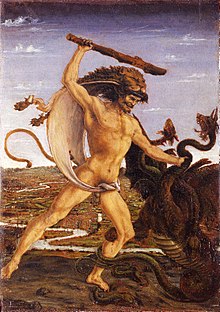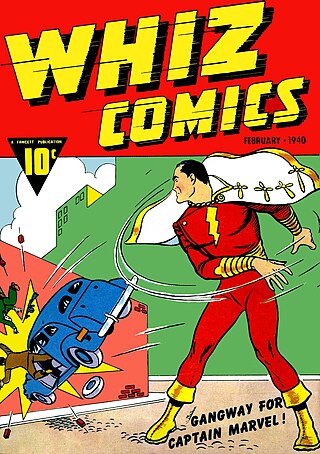
A superhero or superheroine is a stock character who typically possesses superpowers or abilities beyond those of ordinary people, is frequently costumed concealing their identity, and fits the role of the hero; typically using their powers to help the world become a better place, or dedicating themselves to protecting the public and fighting crime. Superhero fiction is the genre of fiction that is centered on such characters, especially, since the 1930s, in American comic books, as well as in Japanese media.
The term superhuman refers to humans, human-like beings or beings with qualities and abilities that exceed those naturally found in humans. These qualities may be acquired through natural ability, self-actualization or technological aids. The related concept of a super race refers to an entire category of beings with the same or varying superhuman characteristics, created from present-day human beings by deploying various means such as eugenics, euthenics, genetic engineering, nanotechnology, and/or brain–computer interfacing to accelerate the process of human evolution.

The DC Universe (DCU) is the shared universe in which most stories in American comic book titles published by DC Comics take place. In context, the term "DC Universe" usually refers to the main DC continuity. It contains such well-known superheroes as Batman, Superman, Wonder Woman, the Flash, Green Lantern, Aquaman, Green Arrow, Shazam, Martian Manhunter, and Cyborg; as well as teams such as the Justice League, the Justice Society of America, the Suicide Squad, Doom Patrol, and the Teen Titans. It also contains well-known supervillains, including the Joker, Lex Luthor, the Cheetah, the Reverse-Flash, Sinestro, Black Manta, Deathstroke, Black Adam, Brainiac, and Darkseid.
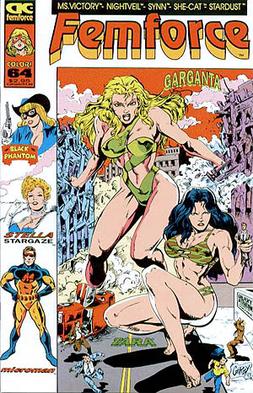
Femforce is a comic book published by AC Comics that began publication in 1985, detailing the adventures of the titular team: the "Federal Emergency Missions Force" or "Femforce", some of them original creations, while others originated in the 1940s and 1950s, lapsing into the public domain by the time Femforce was published. The team are, as their name implies, all superheroines, and are the first and the longest running all-women 'super-team'. The series has passed 200 issues, a significant milestone for an independent comic book company. Writers on the book have included Bill Black, Stephanie Sanderson, Mark Heike, Paul Monsky, Enrico Teodorani and Francesca Paolucci. Artists on the book have included Bill Black, Stephanie Sanderson, Mark Heike, Brad Gorby, Jeff Austin, Dave Roberts and Rik Levins.
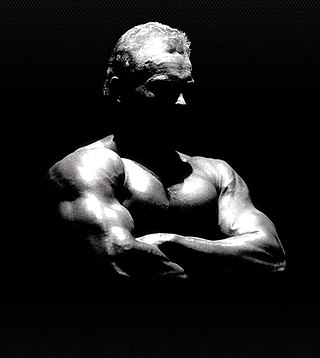
Jón Páll Sigmarsson was an Icelandic strongman, powerlifter and bodybuilder who was the first man to win the World's Strongest Man four times and the first and only man to win the World Muscle Power Classic five times. Jón Páll is widely regarded as one of the greatest strongmen of all time, and is credited with developing Iceland's national identity. He was named Icelandic Sportsperson of the Year in 1981, and was one of the best-known Icelandic athletes. In 2012, Jón Páll was inducted into the World's Strongest Man Hall of Fame.
In the DC Universe, a metahuman is a character with superpowers. The term is roughly synonymous with the terms mutant, inhuman and mutate in the Marvel Universe and posthuman in the Wildstorm and Ultimate Marvel Universes. In DC Comics, the term is used loosely in most instances to refer to any human or human-like being with extraordinary powers, abilities or other attributes, either cosmic, mutant, scientific, mystical, skill or technological in nature. A significant portion of these are normal human beings born with a genetic variant called the "metagene", which causes them to gain powers and abilities during freak accidents or times of intense psychological distress.

The deadlift is a weight training exercise in which a loaded barbell or bar is lifted off the ground to the level of the hips, torso perpendicular to the floor, before being placed back on the ground. It is one of the three powerlifting exercises, along with the squat and bench press, as well as a frequent lift in strongman. It is also occasionally used in armlifting.

The Olympians are a fictional species appearing in American comic books published by Marvel Comics. These characters are based on the Twelve Olympians/Dii Consentes and other deities of Classical mythology. During the beginning of the 1960s, the exploits of the Asgardians Thor and his evil brother Loki demonstrated that an updating of ancient myths could again win readers. In 1965, Stan Lee and Jack Kirby introduced the Olympians in Journey into Mystery Annual #1.

Iron Munro is a superhero character appearing in American comic books published by DC Comics. Roy Thomas created the character in 1987 for Young All-Stars. He largely served to replace Superman in stories set during World War II after the Crisis on Infinite Earths storyline eliminated continuities in which Superman was active in this period.
Hysterical strength refers to a display of extreme physical strength by humans, beyond what is believed to be within their capacity, usually occurring when people are in - or perceive themselves, or others, to be - in life-or-death situations. It was also reported to be present during situations of altered states of consciousness, such as trance and alleged possession. Its description is mostly based on anecdotal evidence.

A superpower is a special or extraordinary superhuman ability that is greater than what is considered normal. Superpowers are typically displayed in science fiction and fantasy comic books, television programs, video games, and films as the key attribute of a superhero. The concept originated in American comic books and pulp magazines of the 1930s and 1940s, and has gradually worked its way into other genres and media.

Superhero fiction is a subgenre of science fiction examining the adventures, personalities and ethics of costumed crime fighters known as superheroes, who often possess superhuman powers and battle similarly powered criminals known as supervillains. The genre primarily falls between hard fantasy and soft science fiction in the spectrum of scientific realism. It is most commonly associated with American comic books, though it has expanded into other media through adaptations and original works.
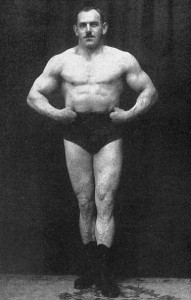
Hermann Görner, was a famous German strongman. Görner performed in various countries and achieved feats of strength rarely matched to this day, most notably in lifts requiring exceptional grip strength.
Captain Courageous is a fictional superhero character who first appeared in Banner Comics #3 from Ace Comics.

Captain Future is a fictional superhero character who first appeared in Startling Comics #1 from Nedor Comics.

Edward Coan is an American powerlifter. He is widely regarded throughout the powerlifting world as the greatest powerlifter of all time. Coan has set over 71 world records in powerlifting.

A powered exoskeleton is a mobile machine that is wearable over all or part of the human body, providing ergonomic structural support and powered by a system of electric motors, pneumatics, levers, hydraulics or a combination of cybernetic technologies, while allowing for sufficient limb movement with increased strength and endurance. The exoskeleton is designed to provide better mechanical load tolerance, and its control system aims to sense and synchronize with the user's intended motion and relay the signal to motors which manage the gears. The exoskeleton also protects the user's shoulder, waist, back and thigh against overload, and stabilizes movements when lifting and holding heavy items.
Edward Stephen Hall is a British media personality and retired strongman. He is best known for his world-record setting 500 kg (1,102 lb) deadlift in 2016 which is widely regarded as one of the most important lifts in the history of strongmen. He is also known for winning the 2017 World's Strongest Man competition.
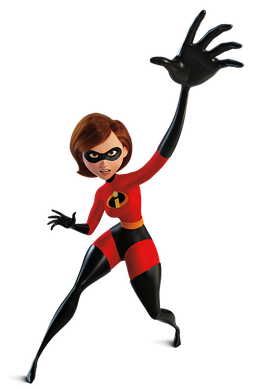
Helen Parr, also known as Elastigirl and Mrs. Incredible, is a fictional superhero who appears in Pixar's computer-animated superhero film The Incredibles (2004) and its sequel Incredibles 2 (2018). Voiced by actress Holly Hunter, the character is a superhero who possesses superhuman elasticity, granting her the ability to stretch any part of her body to great proportions. Helen is introduced in the first film as an accomplished superheroine forced into retirement with the rest of her family after usage of superpowers is banned by law.
World's Ultimate Strongman was an annual strongman competition which was held from 2018 to 2021 with the participation of top strongmen from all over the world, determining who is the strongest man in the world. The event was noted for its brute-strength-centricity and expanded the sport to a wider audience outside of Europe and USA. It also introduced the 'feats of strength' series in 2020, ensuring the continuous expansion of the sport during the Covid-19 pandemic. The competition has a number of rival and parallel competitions, including the World's Strongest Man, the Arnold Strongman Classic and the Giants Live Tour.
